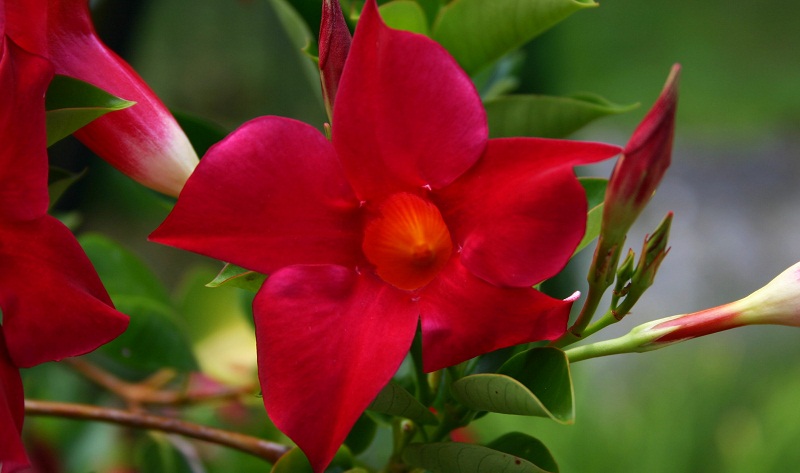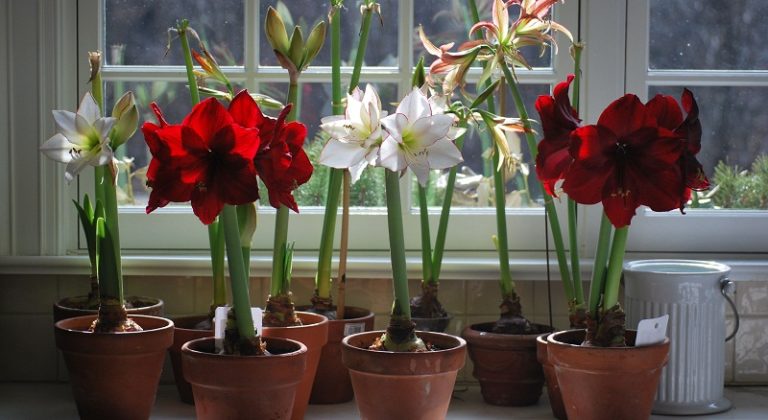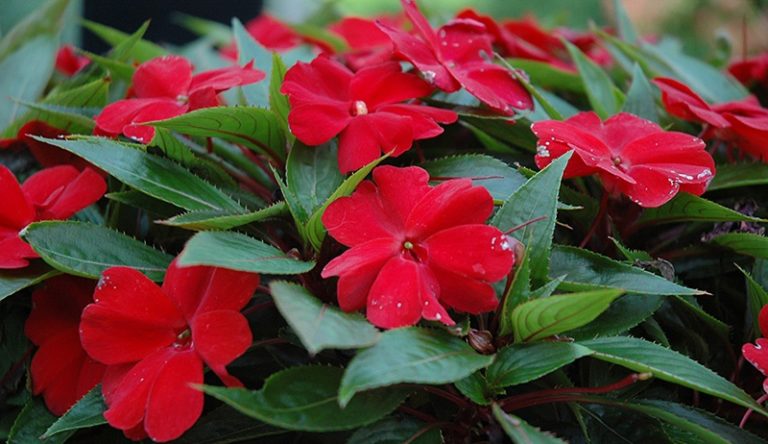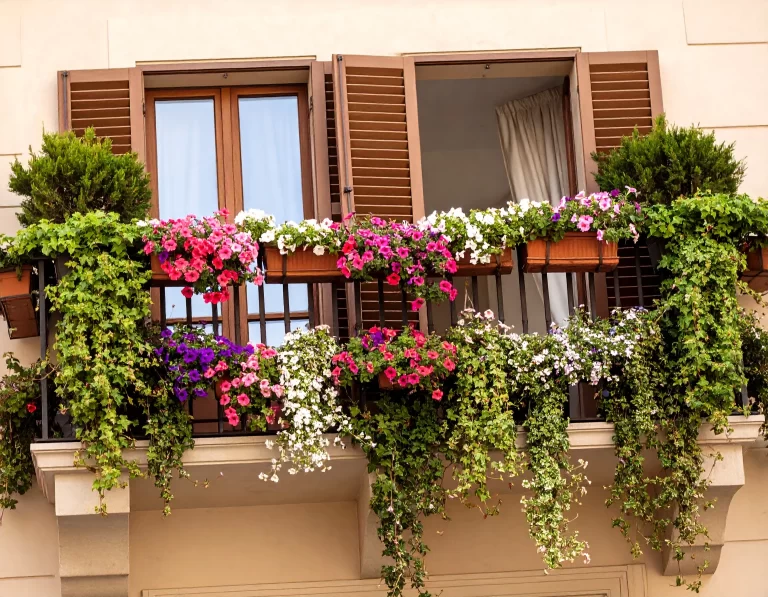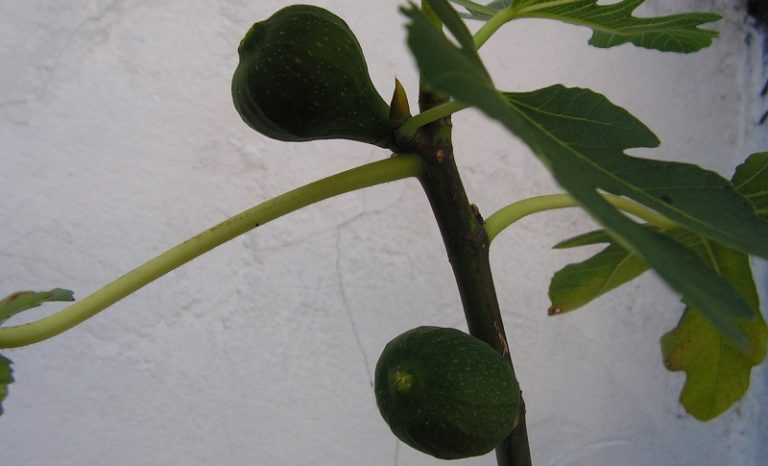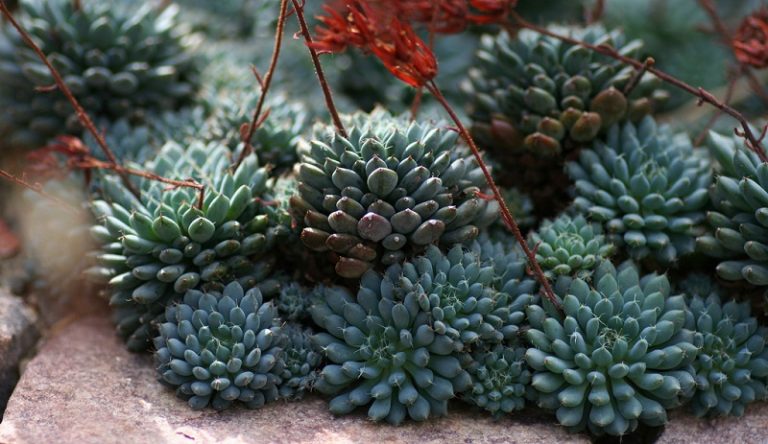Dipladenia (Sundaville): care and reproduction
Dipladenia is a rather whimsical plant. For the successful cultivation of Dipladenia, it should be taken into account that it is a rainforest plant. This vine is photophilous, feels good in full sunlight, requires shading only on hot summer days, and is also sensitive to watering.
Dipladenia should be cared for in a special way.
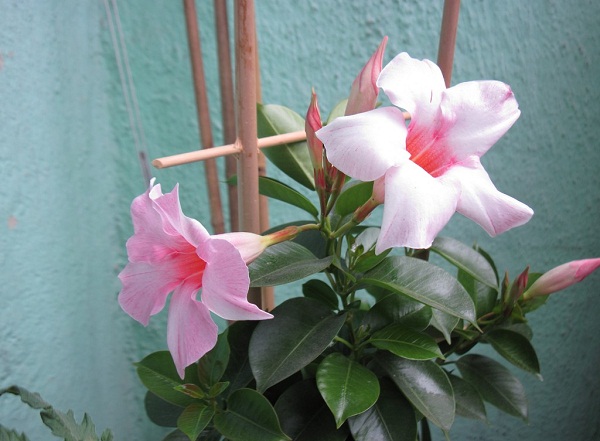
Light brightness for Dipladenia
A well-lit place on the south side of the house is best suited for Dipladenia. But the plant is afraid of direct sunlight, which can cause burns on the leaves.
Air temperature for Dipladenia
During the flowering period, the comfortable air temperature for dipladenia is +20 ° C to +25 ° C in a room with fresh air. She will also feel good on the balcony or in the garden. In winter, the air temperature should be +15 – +18° C , in no case should you allow hypothermia of shoots in which flower buds are already laid (this will affect the intensity of flowering), but not lower than + 12° C, at such low temperatures the plant will freeze and disappear. The plant does not tolerate overdrafts.
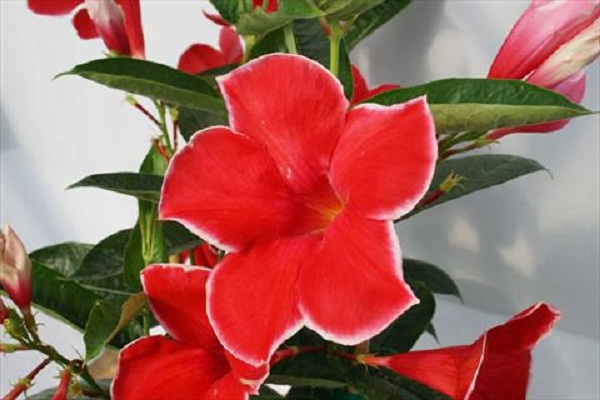
Watering and humidity for Dipladenia
Dipladenia should be watered abundantly during the period of active growth, but not allowing either drying out or waterlogging of the soil. Water for irrigation should be soft at room temperature. Dipladenia, as a tropical plant, loves high humidity. On hot days, spray the leaves of the plant with warm, soft water 2 times a day. Drops of water should not fall on the flowers. Dry indoor air can cause the leaves to curl.
How to increase air humidity? Dipladenia leaves need to be wiped from dust to ensure normal air exchange of the plant. Otherwise, they will lose their shine and decorative appearance.
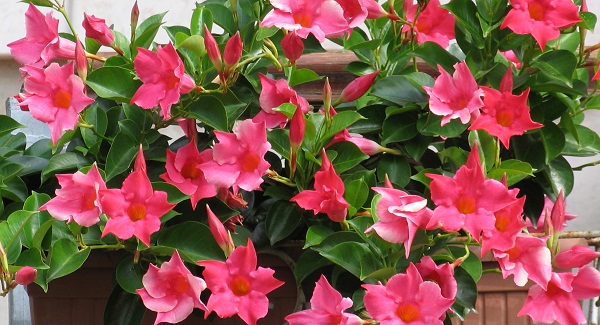
Fertilizers for Dipladenia
Starting in April, you need to feed Dipladenia weekly with complex mineral fertilizers for flowering plants. At the end of August, feeding must be stopped.
Watch the video about indoor violet. Violet flowers are multi-colored, simple, double, wavy with a diameter of 2 to 4 cm.
Pruning Dipladenia
Dipladenia flowers appear only on young shoots. At the beginning of spring, you need to prune the stems, and this procedure must also be repeated after flowering – this will ensure more abundant flowering next year. In young plants, pinch the tops. When grown in the form of a vine, the main stem is left, only the side branches are cut off.
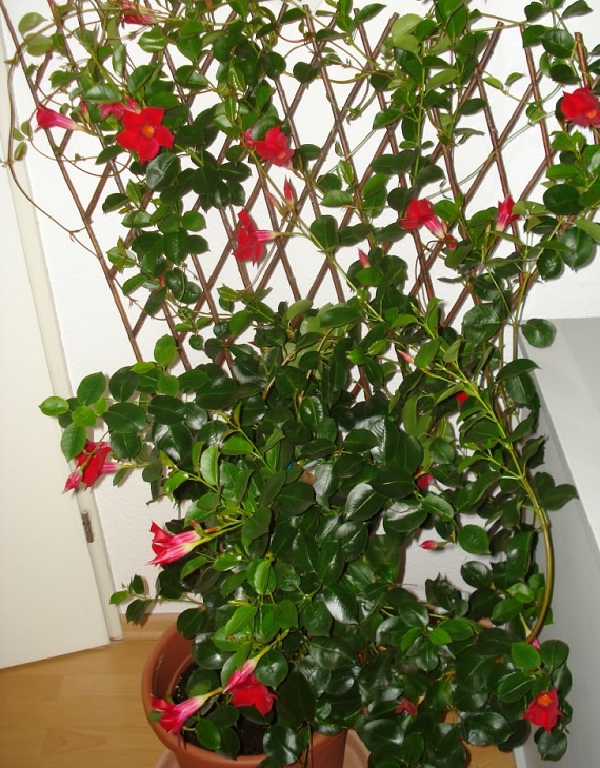
Support for Dipladenia
Dipladenia is a vine, it definitely needs support in the form of trellises or stretched wire. Also, the support has a positive effect on the growth of dipladenia, it begins to grow very quickly upwards.
Repotting and soil for Dipladenia
Dipladenia should be transplanted every year in the spring by transshipment of the plant into a pot 4 cm larger in diameter. The maximum size of the pot is 20-30 cm, in the future, the topsoil is replaced annually. The composition of the soil should include: compost, sand, peat and leafy soil (1:1:2:3) with the addition of vermiculite and perlite.
When transplanting , do not forget to make a hole in the pot to drain excess water, and you also need to ensure good drainage: pour expanded clay 1 cm thick on the bottom of the pot.

Reproduction of Dipladenia
Dipladenia is propagated by stem cuttings, layering and seeds.
When propagated by stem cuttings, the cuttings will take root after 5-6 weeks, after which the plant is planted in single pots with a diameter of up to 14 cm.
Pests and diseases
Of the pests, the most dangerous for dipladenia is the spider mite.
Diseases in dipladenia, as a rule, appear when the above care conditions are not met. Excessive watering or the use of poor-quality soil contributes to root rot, and insufficient humidity or dry air causes leaves to fall, turn pale, flowers and buds fall.

